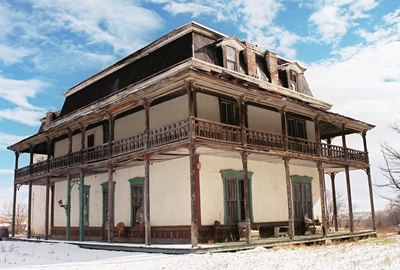
Let’s start 2014 way out on the cold, windswept plains of northeastern New Mexico. There we’ll find Melvin Whitson Mills former home, a three-story adobe territorial mansion with 20 rooms, carved walnut features, and a massive cistern out back.
Melvin Mills (or, “Colonel,” as he was known to friends) was born in 1845 in Ontario, Canada, his Quaker parents moving to Michigan shortly thereafter. He graduated from Ann Arbor Law School in 1869 and then came out to Elizabethtown, NM, where a gold rush was in full swing. But Elizabethtown eventually began to founder and Mills played a key role in getting the Colfax County Seat moved to a new town he was helping establish, this one named after Territorial attorney Frank Springer.
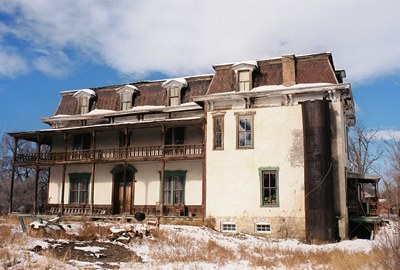
In 1877, Mills, both a District Attorney and New Mexico Territorial Legislator, platted Springer with William Thornton and took up residence, building the magnificent mansion that still stands.
Mills had already been a member of the infamous Santa Fe Ring and thus a major player in the vicious Colfax County War. He made many enemies in northern NM in the 1870’s as he worked to evict settlers, some of whom had lived on “their” land for decades. This was at the behest of the English and later Dutch companies that purchased the 1,714,765-acre (?!) and by then wildly-contested Maxwell Land Grant.
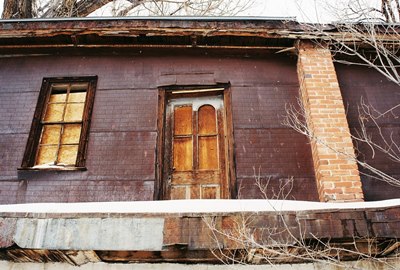
Dark political intrigue and bloodshed aside, Mills had a way with fruits and nuts and his Orchard Ranch, sprawled within a lush canyon of the Canadian River, became renowned, at one point containing 14,000 trees. In addition, he raised cattle and grew vegetables. A stage line stopped at the front door of his Mills Canyon Hotel. Mills’ beef and produce was shipped all over the U.S. and it’s no coincidence that Springer was already a bustling railroad town on the Santa Fe’s line. Pictured above and below is the shell of the Springer House, once the place where everyone went to raise a glass as soon as they stepped off the train. Now even the tracks themselves are gone.
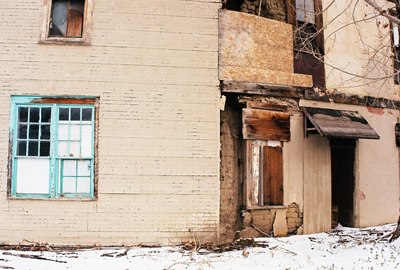
In 1904, heavy rains came and the swollen Canadian washed away Mills’ agricultural empire entirely, leaving him a ruined man. He abandoned the area, but is supposed to have returned at the end of his life to ask his former Santa Fe Ring partner, Thomas B. Catron, if he might be allowed to die on a cot in the beautiful house that Catron is said to have now owned. However, Catron had died over four year earlier, in the spring of 1921, raising questions as to how Catron gave his consent. In fact, there's no evidence Catron ever actually did own the mansion, although he bought some of the original Maxwell Land Grant from Mills. More likely is that the president of the bank in Springer, who did own the home and was a friend, granted the request. But I wonder if even this is true; the August 21, 1925 edition of the The Springer Times makes no mention of any of it when announcing Mill’s death, only saying he “passed away at his home in Springer.” What is surely true is that Mills died on August 19, 1925, age 79. The next day he’d been scheduled to give a talk at the New Mexico Historical Society. While virtually nothing remains of his once vast-holdings, a small community to the southeast still bears his name.
Might Melvin Whitson Mills still reside in his mansion? There are many sources that say he does. But when I asked the current owner, all I received was a smile and the cryptic reply: “I don’t know what you’re talking about.” The Cactus Café (below) in downtown Springer looked about the same last fall as it did in 2005 when I first encountered it. Some things in the desert don’t change (fast).
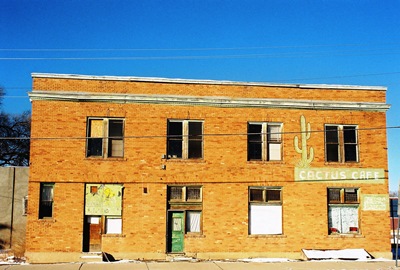
Information for this post came from all over the place and the conflicting “facts” of Mills’ involvement in the Colfax County War are voluminous. I tried my best. Mills’ Wikipedia entry is bizarre and disjointed, but does seem to contain a few true facts. The New Mexico Historical Review, Volume 1, contains some of the best background on the man. Frank Springer and New Mexico: From the Colfax County War to the Emergence of Modern Santa Fe and Translating Property: The Maxwell Land Grant and the Conflict Over Land in the American West, 1840-1900 seem to do the most thorough work on the shadowy war, which once saw the town of Cimarron essentially blockaded. Arthur and David Pike's "Detour New Mexico" is one of the only published sources to debunk the myth of Catron allowing Mills to die in the mansion. Did you know you can hike in the beautiful and now even more remote canyon where Mills’ great orchard once stood? You can actually hear the mansion here. Finally, this website, by T.T. Hagaman, provides contact information for the mansion itself. I thank him for allowing me inside and permitting me to photograph the lovely staircase.
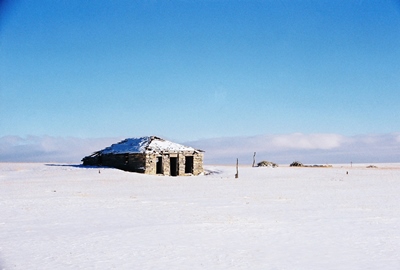
Next time we’ll travel almost the entire length of the state to have a look at Steins, out near the Arizona border, where a tragic murder in 2011 has cast a pall over the little ghost town.
Intersting post on part of New Mexico history.
ReplyDeleteIt is pretty interesting history, isn't it, Anonymous?! New Mexico seems to have a never-ending supply of such tales.
ReplyDeleteThanks for the comment! JM
Here's some really good video of what's left of Melvin Mills property in Mills Canyon.
ReplyDeleteCreigh Gordon, that video link didn't seem to follow your message. Could you re-send? I saw only the stone fruit washing/storage building and somehow missed the hotel ruins. So I'd really like to see where those are, as well as what else might be down there.
ReplyDeleteThanks for the comment! Much appreciated! JM
Very interesting American History Lesson...at least you care enough to keep it written down for future generations...should they care. You never know. I found your photography wonderful!
ReplyDeleteThank you for the kind words, Karen Sellner. I appreciate it! And, yes, this history is documented here for the future. I hope to keep these posts available for as long as the internet exists. Who knows how long that will be?
ReplyDeleteThanks again! JM
My mom and dad rented a room there in the late seventies.
ReplyDeleteIf they rented a room there, they rested it from my great great aunt myrtle clegg, who owned this house until the city took it over. My mom spent a great deal of time there as a child and always had a blast!
ReplyDeleteI remember my mom mentioning Myrtle when I was a little girl in the 70's. I didn't get to see inside the house though until Nathan Smith owned it. That would have been the late 90's I believe. The fact that it still stands is truly a testament to how well built many of these old houses were.
ReplyDeleteThank you for your comment, Unknown(s)! The mansion has clearly had many owners over the years, including the Springer Bank around the time of Mills' death. There are new owners as of the last year, so we'll see what the next chapter of the Mills Mansion brings. Hopefully some shoring up!
ReplyDeleteThanks for adding Myrtle Clegg and Nathan Smith to the story! JM